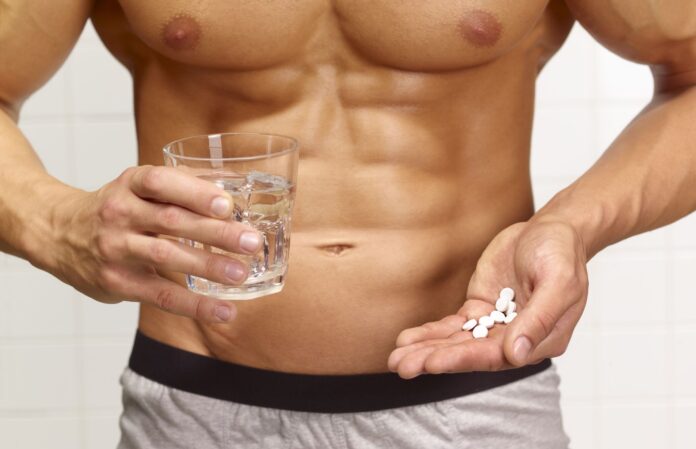A man’s testosterone level must be monitored as he ages. Declining testosterone correlates to lost muscle tone, diminished energy, reduced libido, and erectile function, and decreased motivation and mood. For men seeking a boost, natural testosterone boosters provide an appealing option to increase levels through safe, gentle mechanisms. While testosterone naturally decreases 1-2% per year after age 30, significant low T symptoms don’t have to be inevitable. Boosting youthful testosterone levels in the 40s, 50s, and beyond is possible through smart nutrition, exercise, stress management, and targeted supplements. Given the wide-ranging roles testosterone plays in men’s health, optimizing levels well into middle age and beyond delivers real advantages. Supplements support the body’s natural hormone-regulation processes.
Testosterone biosynthesis
Before exploring how testosterone boosters work, let’s briefly review how testosterone is made and regulated in the body. Testes produce testosterone primarily in Leydig cells. LH is released by the pituitary gland after the hypothalamus releases GnRH. LH is the primary signal that communicates to the testes to produce testosterone. Once testosterone levels become adequate, this downstream signaling causes the hypothalamus and pituitary to decrease LH production via a negative feedback loop. Maintaining youthful testosterone hinges on keeping this loop sensitive. Testosterone boosters augment the loop through various mechanisms. If you want more information, visit hone health reviews by truehealthdiary.com.
Key ways testosterone boosters increase levels
Modern testosterone boosters enhance natural T production through these core mechanisms:
Boost luteinizing hormone (LH)
Increasing LH secretion from the pituitary is one of the most central pathways for boosting testosterone. Supplements may enhance LH through:
- Vitamin D – Shown to increase LH and boost T levels at moderate to high doses of 3000+ IUs daily.
- D-Aspartic Acid – Multiple studies find DAA supplements increase LH and testosterone in men with low baseline T.
- Magnesium – Helps signal LH release and can raise low testosterone. The dose range is 400-500 mg/day.
- Zinc – This essential mineral is crucial for pituitary health and LH secretion. 30 mg daily is sufficient.
- Supporting the hypothalamic-pituitary-gonadal axis – Compounds that provide raw materials to optimize healthy feedback signaling between the hypothalamus, pituitary, and testes.
Reduce sex hormone binding globulin (SHBG)
SHBG binds to testosterone, rendering much of it biologically unavailable. Compounds that reduce SHBG include:
- Boron – Some research indicates daily boron can lower SHBG. 10 mg/day seems optimal.
- Nettle Root – Shown to mildly decrease SHBG when supplementing 300-600 mg daily.
- Spearmint/Peppermint – May lower SHBG due to menthol content, according to animal studies.
Block conversion enzymes
The enzymes aromatase and 5-alpha reductase degrade testosterone into estrogen and DHT respectively. Natural blockers include:
- Chrysin, Apigenin, Hesperetin – Flavonoid compounds that inhibit aromatase with limited toxicity.
- Nettle Root – Natural 5-alpha reductase inhibitor that limits DHT conversion.
- Saw Palmetto – Shown to block 5-alpha reductase activity in prostate cells.
- Resveratrol – This antioxidant found in wine and knotweed demonstrates aromatase inhibition.
Modulate estrogen receptors
While small amounts of estrogen are important for men, too much can decrease testosterone. Nutrients like zinc may optimize estrogen receptor behavior by:
- Acting as a partial antagonist in the hypothalamus, preventing estrogen from suppressing LH and testosterone secretion.
- Inhibiting estrogen receptor transcription in the prostate and other tissue. This blocks excessive estrogen stimulation.


